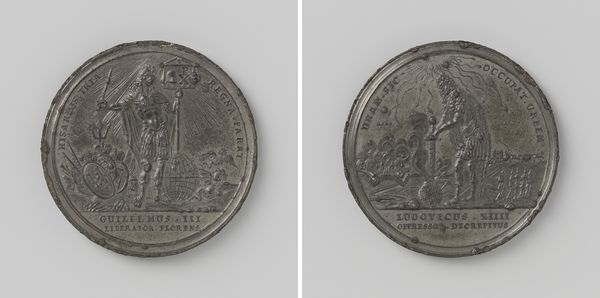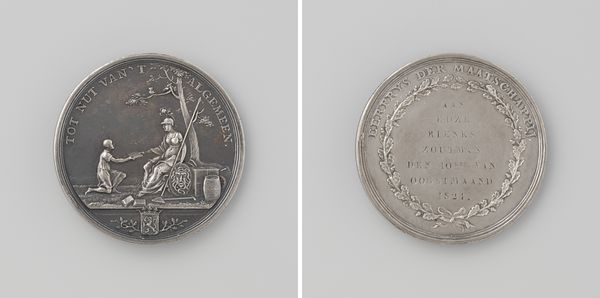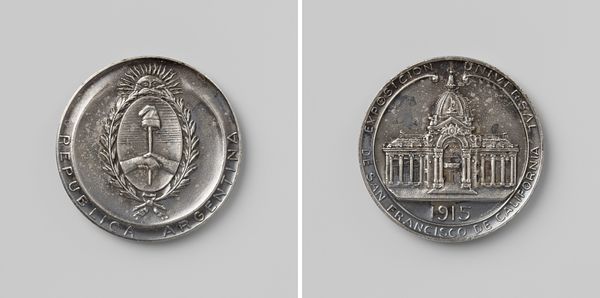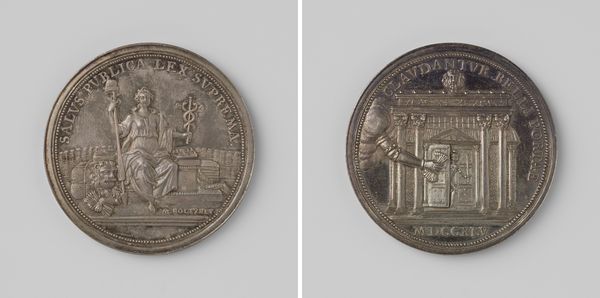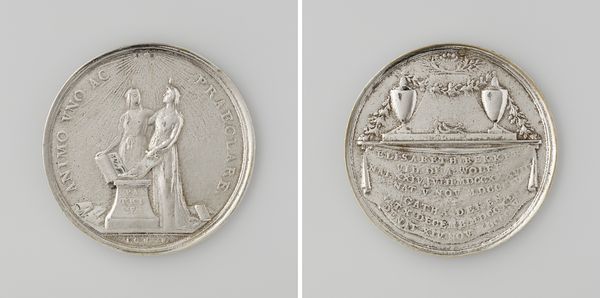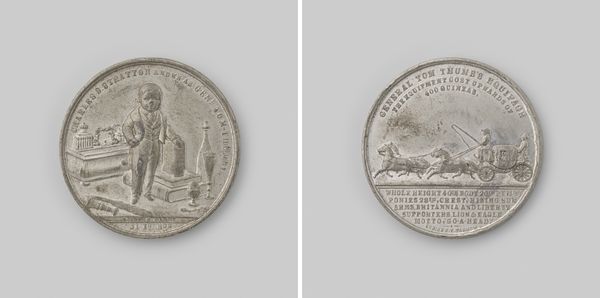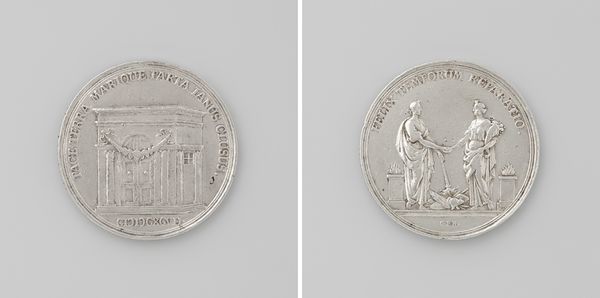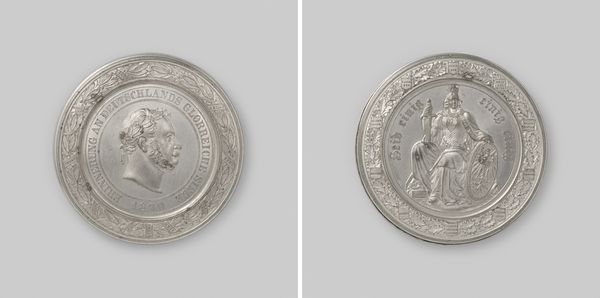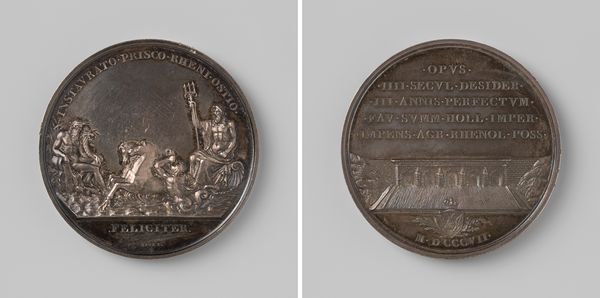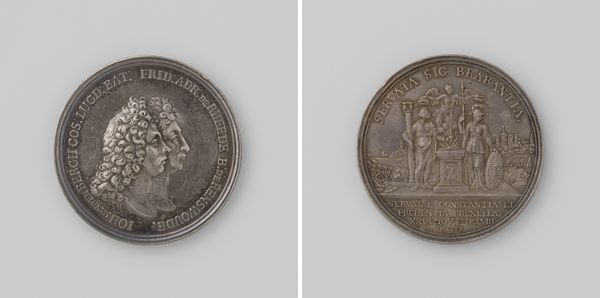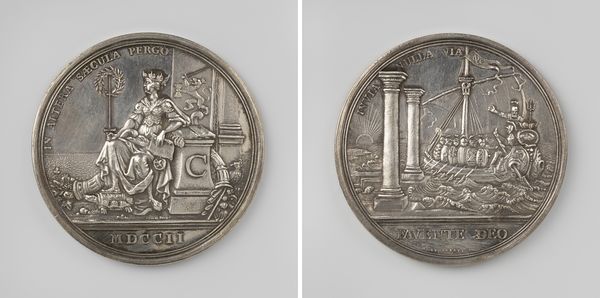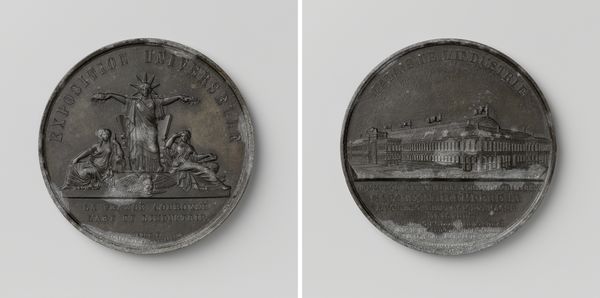
print, metal, relief
#
portrait
#
neoclacissism
#
allegory
# print
#
metal
#
relief
#
geometric
#
history-painting
Copyright: Rijks Museum: Open Domain
Curator: Looking at this striking coin created in 1813 by Johann Thomas Stettner, entitled "Overwinningen van de bondgenoten op de Fransen in het jaar 1813," I immediately notice its rather stoic composition. There’s something deeply serious and commemorative about it. Editor: Yes, and even beyond its formal qualities, what strikes me first is the clear statement of allied victory, and therefore the inevitable suffering the coin seeks to celebrate. It frames the historical narrative firmly from one perspective. Curator: On one side we see what appear to be three female allegorical figures, perhaps representing justice, wisdom, and prosperity— classic virtues associated with Neoclassical aesthetics and idealised social order. Editor: Absolutely, these female figures are very reminiscent of state propaganda of that era, as they function to reinforce certain ideas about gender, power, and national identity after those victories. The use of classical imagery to evoke "eternal" and "universal" values is a very strategic play, given its very specific historical context. Curator: True, and notice how the coin uses architecture to echo notions of order and solidarity? It is the coalition that defeats France. The inscription reads "Unity, May Equity, Wisdom and Counsel Prosper Our Actions." These symbols become instruments for establishing, perpetuating, and guarding particular ways of knowing the world. Editor: It also tells us something important about historical memory. What do we choose to immortalise? Victories. Not always, it seems, with attention to the complicated human cost of conflict. Such commemorative works risk solidifying dominant historical accounts, neglecting the many experiences, particularly of women or marginalized communities involved. What version of history are we really holding here in our hands? Curator: Your point certainly pushes us to consider the full weight of such a symbol. For me, considering the historical trauma alongside its artistic construction brings new meaning. Editor: Right. Context makes all the difference, doesn't it?
Comments
No comments
Be the first to comment and join the conversation on the ultimate creative platform.
